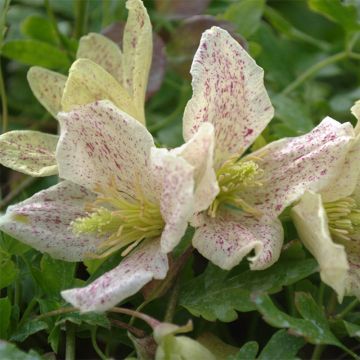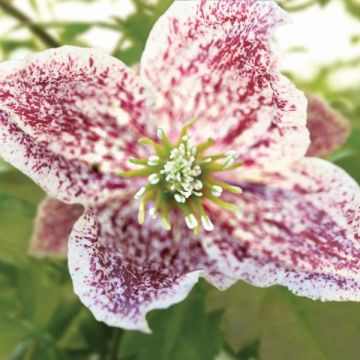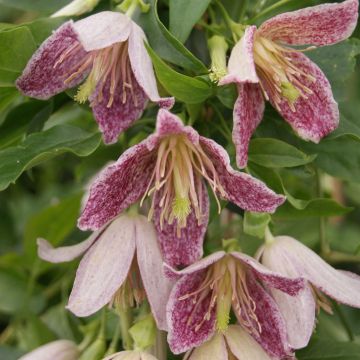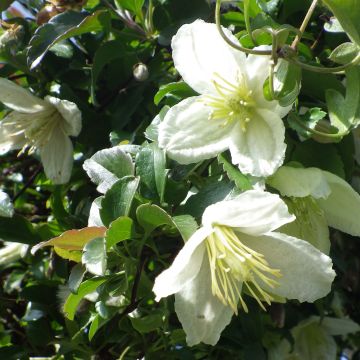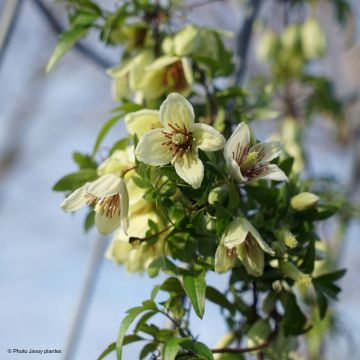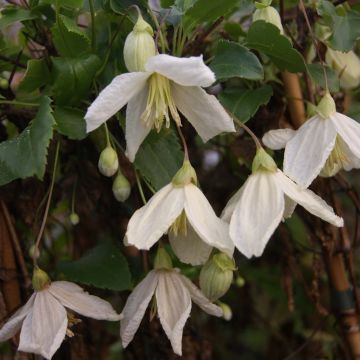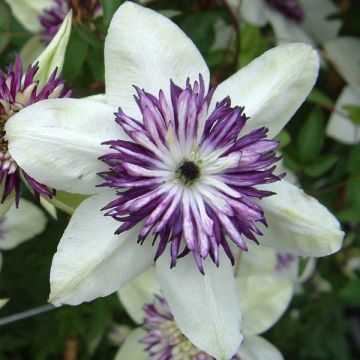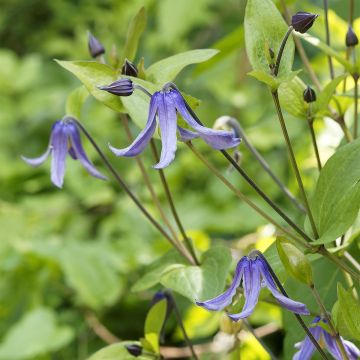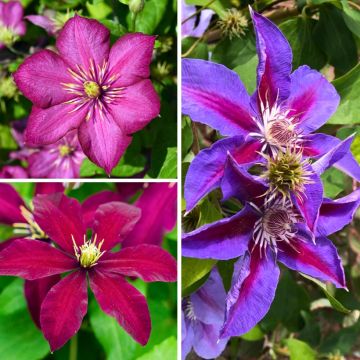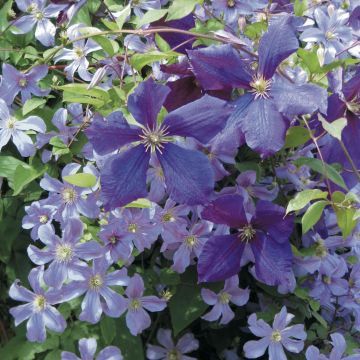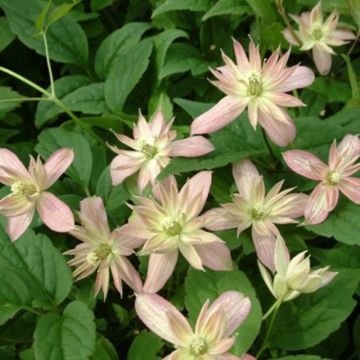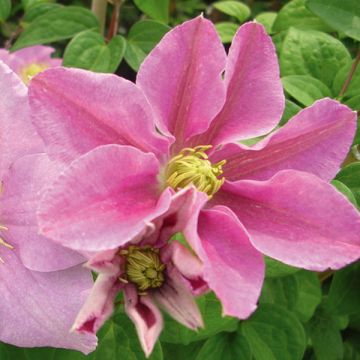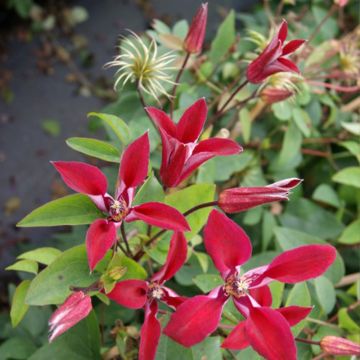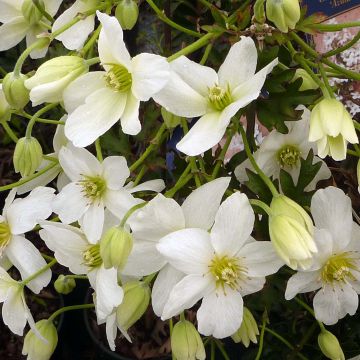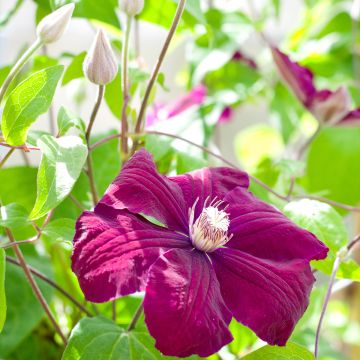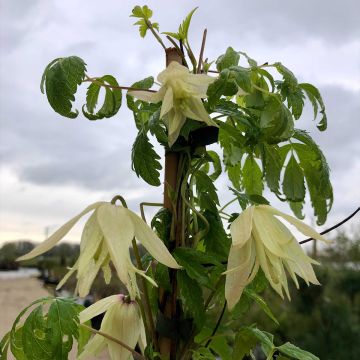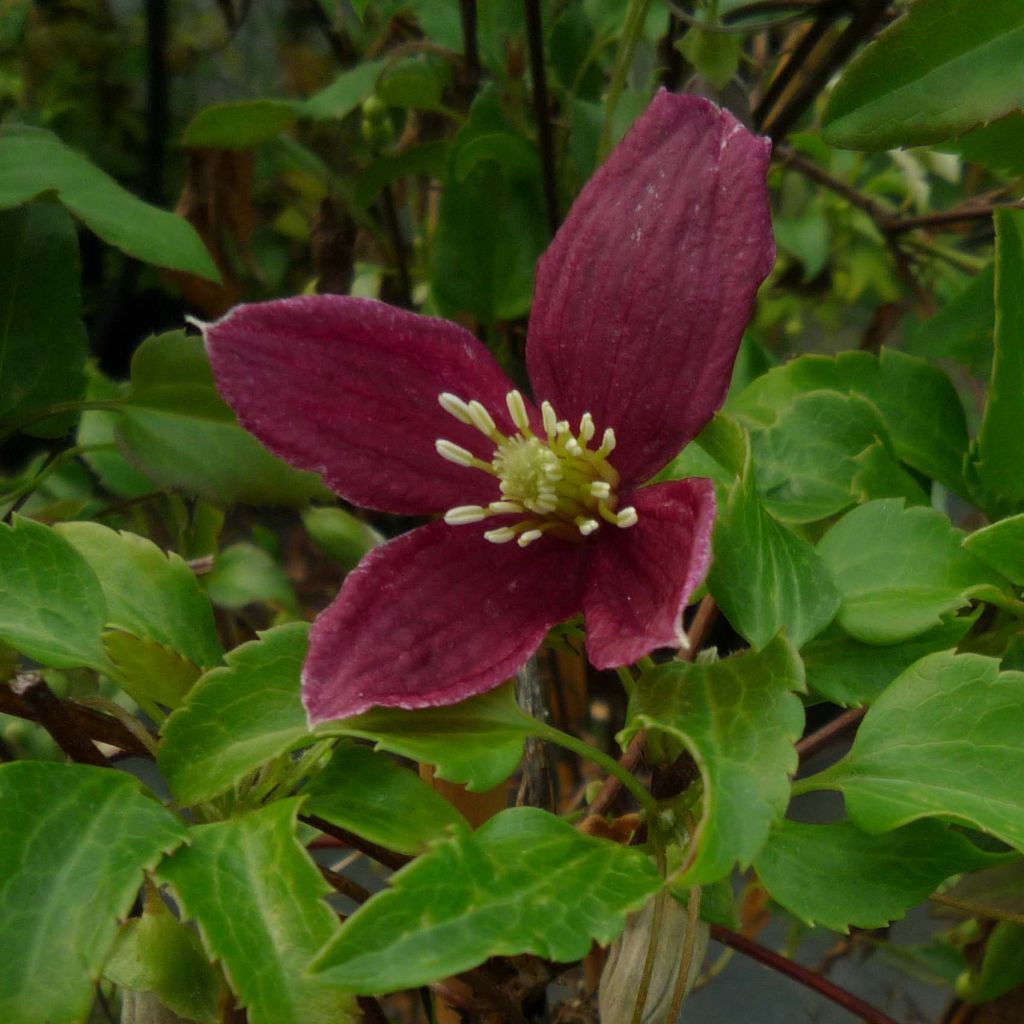

Clematis cirrhosa Lansdowne Gem
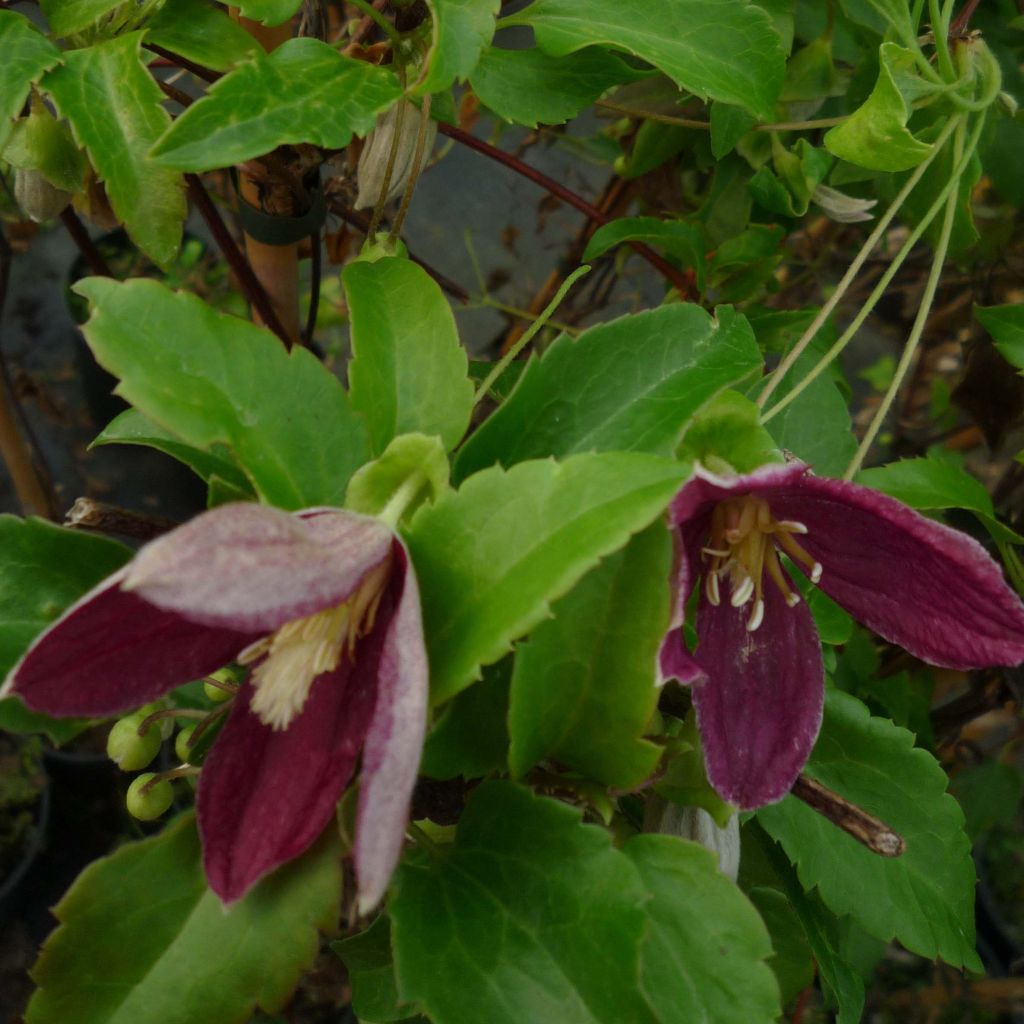

Clematis cirrhosa Lansdowne Gem
Clematis cirrhosa Lansdowne Gem
Clematis cirrhosa Lansdowne Gem
Superb variety that begins flowering since early November, planted last autumn.
Estefab, 13/11/2023
This item cannot be shipped to the selected country
Delivery charge from €5.90
Delivery to Corse prohibited
More information
Schedule delivery date,
and select date in basket
This plant carries a 6 months recovery warranty
More information
We guarantee the quality of our plants for a full growing cycle, and will replace at our expense any plant that fails to recover under normal climatic and planting conditions.
From €5.90 for pickup delivery and €6.90 for home delivery
Express home delivery from €8.90.
Delivery to Corse prohibited: UE law prohibits the import of this plant from mainland France to Corse as part of the fight against Xylella fastidiosa. Please accept our sincere apologies.
More information
Does this plant fit my garden?
Set up your Plantfit profile →
Description
Clematis cirrhosa 'Lansdowne Gem' is a rare Mediterranean climbing plant. In the heart of winter, it produces a multitude of bell-shaped flowers with 4 dark red sepals, adorned with golden stamens. Its highly lobed foliage is bronze then green. It is (semi-)evergreen. This vigorous plant has a moderate growth habit. It will beautifully dress a deciduous bush. It is sensitive to cold and can only survive if temperatures do not drop below -8°C (17.6°F).
Clematis cirrhosa, also known as the waxflower clematis, is a climbing plant from the Ranunculaceae family. Native to the Mediterranean region, from southern Spain to the Middle East via Greece and Sardinia, it grows in rocky and fairly dry terrain, on sunny slopes with a tendency towards limestone. It has evergreen (or semi-evergreen, depending on the region), somewhat leathery foliage with deeply incised lobes, and an incised margin. Often bronze when budding, it turns medium green afterwards. The petioles transformed into tendrils help it to easily cling to the surrounding bushes. The stems generally reach a length of 3m (10ft), with a spread of 1.5m (5ft). Its main characteristic, however, is its ability to flower in the middle of winter, between January and March. The flowers can even bloom in November, depending on the climate. The bell-shaped flowers have somewhat leathery sepals, a waxy appearance (which gives the plant its name), and are slightly fragrant. The 'Lansdowne Gem' variety presents beautiful dark red, purplish flowers.
Clematis cirrhosa 'Lansdowne Gem' is an easy-to-grow climber, provided it is given perfectly well-drained, even rocky soil. Avoid overly wet soils, as they would cause the stump to rot. Also avoid overly rich soils, which would result in excessive foliage growth at the expense of flowers and increased susceptibility to diseases. Once established, it tolerates periods of drought very well. However, its hardiness is quite limited: it should be grown in a climate where the coldest temperature does not exceed -8°C (17.6°F). Alternatively, it can be cultivated in a large pot. As with most clematis, place it "with its feet in the shade and its head in the sun".
This clematis works wonders when trained on a trellis or, even better, in a large deciduous bush, such as a chaste tree (Vitex agnus-castus) or a smoke bush. Its moderate growth means it can adorn bare branches during winter without suffocating the bush. The climber's flowering ends when the bush produces its first leaves, creating a beautiful effect for months. During the early stages of its life, it is wise to help the young shoots cling to their support. This will help them to cover the support more quickly.
Report an error about the product description
Clematis cirrhosa Lansdowne Gem in pictures
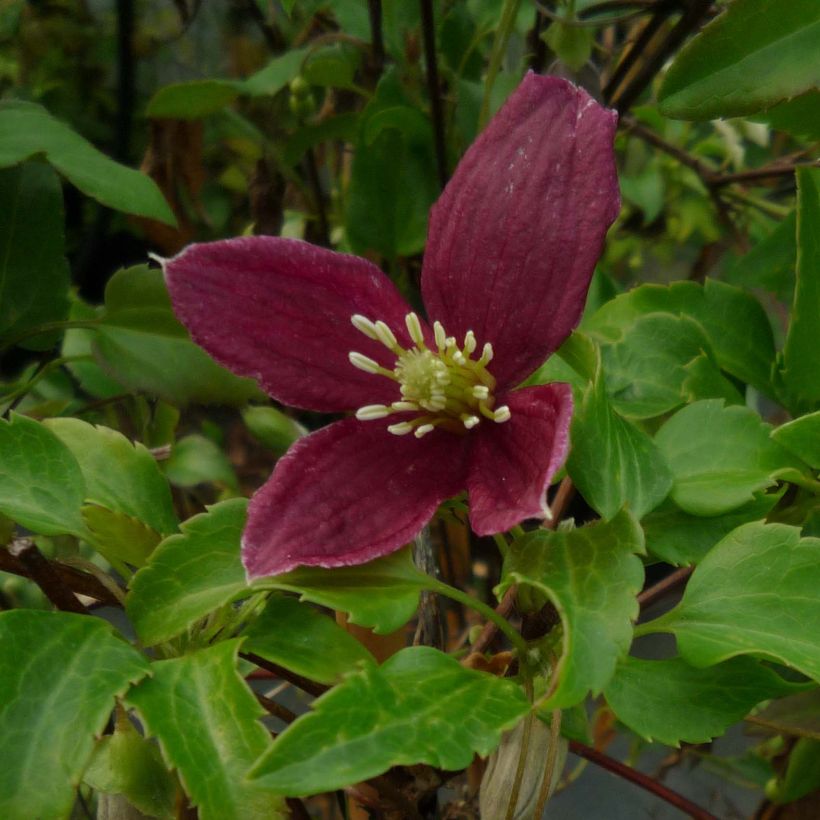

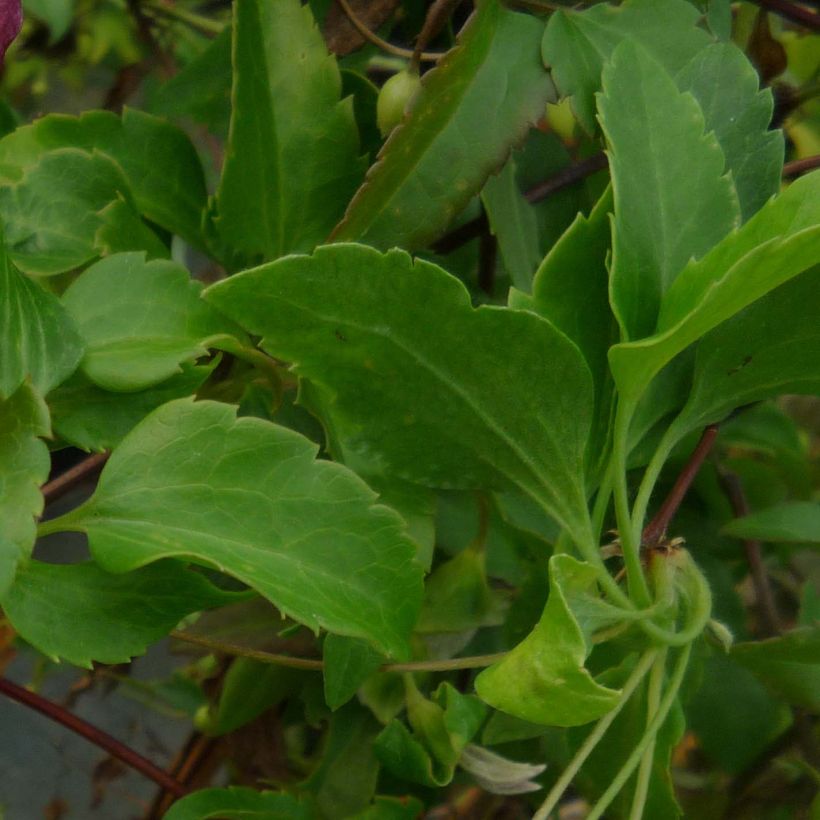

Plant habit
Flowering
Foliage
Botanical data
Clematis
cirrhosa
Lansdowne Gem
Ranunculaceae
Cultivar or hybrid
Other Clematis Cirrhosa
Planting and care
Clematis 'Lansdowne Gem' requires a position in full sun, sheltered from strong winds. It can also be placed in a partially sunny location. Keep the base in the shade and the head in the sun. You can shade the base of your clematis with a ground cover plant or a perennial geranium. A bark mulch helps maintain soil moisture. It prefers light, fertile soil that is not too dry to moist and, above all, well-drained. Work the soil to a depth of 20cm (8in), and lighten it with good compost. Position the plant and cover the root ball with 3cm (1in) of soil. It is recommended to add fertiliser in summer.
Clematis is sensitive to excess moisture. However, water it well during the growing season, but little at a time and not directly on the base. Stagnant water can cause a fungus at the base of clematis plants.
Clematis 'Lansdowne Gem' does not require any specific pruning. However, you can prune it to 40cm (16in) from the ground in early spring to increase its density and flowering.
Clematis cling on their own with their tendrils. To promote their growth, provide them with a trellis support or let them dress the trunk of a tree by placing a wire mesh against the trunk for the clematis to climb on. Clematis also like to grow freely on neighbouring plants.
They can be prone to fungal diseases (such as leaf spots), especially in winter.
Planting period
Intended location
Care
-
, onOrder confirmed
Reply from on Promesse de fleurs
Clematis
Haven't found what you were looking for?
Hardiness is the lowest winter temperature a plant can endure without suffering serious damage or even dying. However, hardiness is affected by location (a sheltered area, such as a patio), protection (winter cover) and soil type (hardiness is improved by well-drained soil).

Photo Sharing Terms & Conditions
In order to encourage gardeners to interact and share their experiences, Promesse de fleurs offers various media enabling content to be uploaded onto its Site - in particular via the ‘Photo sharing’ module.
The User agrees to refrain from:
- Posting any content that is illegal, prejudicial, insulting, racist, inciteful to hatred, revisionist, contrary to public decency, that infringes on privacy or on the privacy rights of third parties, in particular the publicity rights of persons and goods, intellectual property rights, or the right to privacy.
- Submitting content on behalf of a third party;
- Impersonate the identity of a third party and/or publish any personal information about a third party;
In general, the User undertakes to refrain from any unethical behaviour.
All Content (in particular text, comments, files, images, photos, videos, creative works, etc.), which may be subject to property or intellectual property rights, image or other private rights, shall remain the property of the User, subject to the limited rights granted by the terms of the licence granted by Promesse de fleurs as stated below. Users are at liberty to publish or not to publish such Content on the Site, notably via the ‘Photo Sharing’ facility, and accept that this Content shall be made public and freely accessible, notably on the Internet.
Users further acknowledge, undertake to have ,and guarantee that they hold all necessary rights and permissions to publish such material on the Site, in particular with regard to the legislation in force pertaining to any privacy, property, intellectual property, image, or contractual rights, or rights of any other nature. By publishing such Content on the Site, Users acknowledge accepting full liability as publishers of the Content within the meaning of the law, and grant Promesse de fleurs, free of charge, an inclusive, worldwide licence for the said Content for the entire duration of its publication, including all reproduction, representation, up/downloading, displaying, performing, transmission, and storage rights.
Users also grant permission for their name to be linked to the Content and accept that this link may not always be made available.
By engaging in posting material, Users consent to their Content becoming automatically accessible on the Internet, in particular on other sites and/or blogs and/or web pages of the Promesse de fleurs site, including in particular social pages and the Promesse de fleurs catalogue.
Users may secure the removal of entrusted content free of charge by issuing a simple request via our contact form.
The flowering period indicated on our website applies to countries and regions located in USDA zone 8 (France, the United Kingdom, Ireland, the Netherlands, etc.)
It will vary according to where you live:
- In zones 9 to 10 (Italy, Spain, Greece, etc.), flowering will occur about 2 to 4 weeks earlier.
- In zones 6 to 7 (Germany, Poland, Slovenia, and lower mountainous regions), flowering will be delayed by 2 to 3 weeks.
- In zone 5 (Central Europe, Scandinavia), blooming will be delayed by 3 to 5 weeks.
In temperate climates, pruning of spring-flowering shrubs (forsythia, spireas, etc.) should be done just after flowering.
Pruning of summer-flowering shrubs (Indian Lilac, Perovskia, etc.) can be done in winter or spring.
In cold regions as well as with frost-sensitive plants, avoid pruning too early when severe frosts may still occur.
The planting period indicated on our website applies to countries and regions located in USDA zone 8 (France, United Kingdom, Ireland, Netherlands).
It will vary according to where you live:
- In Mediterranean zones (Marseille, Madrid, Milan, etc.), autumn and winter are the best planting periods.
- In continental zones (Strasbourg, Munich, Vienna, etc.), delay planting by 2 to 3 weeks in spring and bring it forward by 2 to 4 weeks in autumn.
- In mountainous regions (the Alps, Pyrenees, Carpathians, etc.), it is best to plant in late spring (May-June) or late summer (August-September).
The harvesting period indicated on our website applies to countries and regions in USDA zone 8 (France, England, Ireland, the Netherlands).
In colder areas (Scandinavia, Poland, Austria...) fruit and vegetable harvests are likely to be delayed by 3-4 weeks.
In warmer areas (Italy, Spain, Greece, etc.), harvesting will probably take place earlier, depending on weather conditions.
The sowing periods indicated on our website apply to countries and regions within USDA Zone 8 (France, UK, Ireland, Netherlands).
In colder areas (Scandinavia, Poland, Austria...), delay any outdoor sowing by 3-4 weeks, or sow under glass.
In warmer climes (Italy, Spain, Greece, etc.), bring outdoor sowing forward by a few weeks.

































